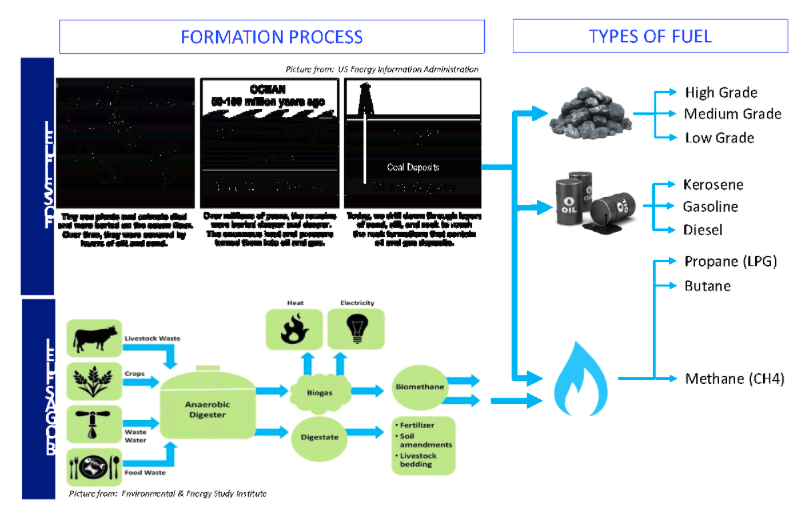Biogas is a type of biofuel that is formed from a natural decomposition process of organic waste, such as waste from agricultural waste, manure, municipal waste, plant material, sewage, green waste or food waste. When these organic wastes experience a natural break-down in an anaerobic environment (an environment absent of oxygen) they release a blend of gases, primarily methane (CH4) 50-75%, and carbon dioxide (CO2) 25-50%, and relatively very small amount of Nitrogen (N) and Hydrogen (H), both in total below 1%. Thus, because this decomposition happens in an anaerobic environment, the process of producing biogas is also known as anaerobic digestion.
As the main form of gas in Biogas is methane, it is like natural gas found in gas field that is commonly used as an energy source. However, while natural gas is a fossil energy source that were formed deep beneath the earth’s surface and commonly found in a large amount, biogas is a renewable energy in which the volume amount produced are relatively small compare to that of a natural gas reservoir. Similar to other fuels, biogas is also being used as a form of fuel to generate power for machinery as well as to provide energy for services such as heating, transportation and electrical generation.
Methane gas has been known for its clean and efficient combustion properties. In comparison to coal or petroleum, when burned methane emits significantly lower amounts of smog-forming pollutants, toxic air contaminants, and gases that contribute to global climate change.
There are different biogas treatment steps that are necessary prior to be use for different application. Some application which requires high energy content in the gas such as using biogas for a vehicle fuel or diesel generator fuel, the gas should be upgraded. The energy content of biogas is directly proportional to methane concentration.
Therefore, removing carbon dioxide in the upgrading process, makes the energy content in the gas increase. This basically is the process of upgrading biogas. There basically 3 (three) methods of upgrading technology, those are membrane separation, water scrubbing, and pressure swing adsorption.




